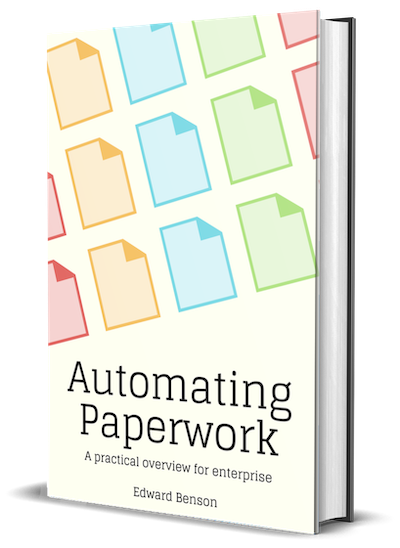Defining business problems by their inputs
The business processes ripe for automation are the ones with clearly defined inputs. A bank transfer, an account opening, and document discovery session all have some specific set of data that parameterizes the actions involved. The data that, if it were written down, provides 100% of the information necessary for an expert to conduct the task.
Your first step is to write that data down.
Reproduce something like the diagram below. The example responses in this diagram are from a hypothetical legal team that wants to triage their work by automatically finding the most valuable upcoming contracts not yet renegotiated. They think they can do this by scanning every contract in their shared drive and extracting the contract value and the contract end date.

This diagram invites you to spell out your core business value:
- The business problem being supported e.g.: prioritization of contract renegotiations
- The specific activity to support it e.g. Build a ranked list of contracts in Excel for the legal team to review each Monday
And your hypothesis for how you're going to deliver that value:
- The data required to perform that activity e.g. finding the contract value and end date
- The location where that data lives today e.g. each existing contract
You can create this diagram at lunch on the back of a napkin, and yet you'd be surprised how many automation-interested teams fail to do so. Without this document, conversations about automation can be dangerously high level: you benefit from the excitement of abstract value without the guardrails of specific intentions. But if you do create this document, you're armed with a concrete hypothesis and intent that you can begin working with.
Examples
The introduction explained Natural Language Understanding by providing a list of activities going on across the workplaces of the world. All of these activities translate well into Document Extraction problems that you can address today, and if you were to do that, you would end up using this vetting process.
Here is a sketch of how you might approach this vetting step for those activities:
- Late Night Paralegal.
To support deal diligence, review problematic contract terms by finding paragraphs related to indemnity in each new contract. - Tractor Salesman.
To increase sales, find newcomers to the industry by reading newspaper articles about farm openings in the local newspaper. - Hong Kong Actuary.
To support diligence, identify risk factors in narrative health summary by marking paragraphs with known high-risk activities in new applications. - Receipt Checking Accountant.
To find accounting errors, re-check raw invoice data against accounting ledger by inspecting key fields from the raw invoices in PDFs uploaded to the department reimbursement system. - Glass Cubicle Banker.
To open a new account, enter required customer information by extracting key fields from an onboarding packet provided as paper by the client.
